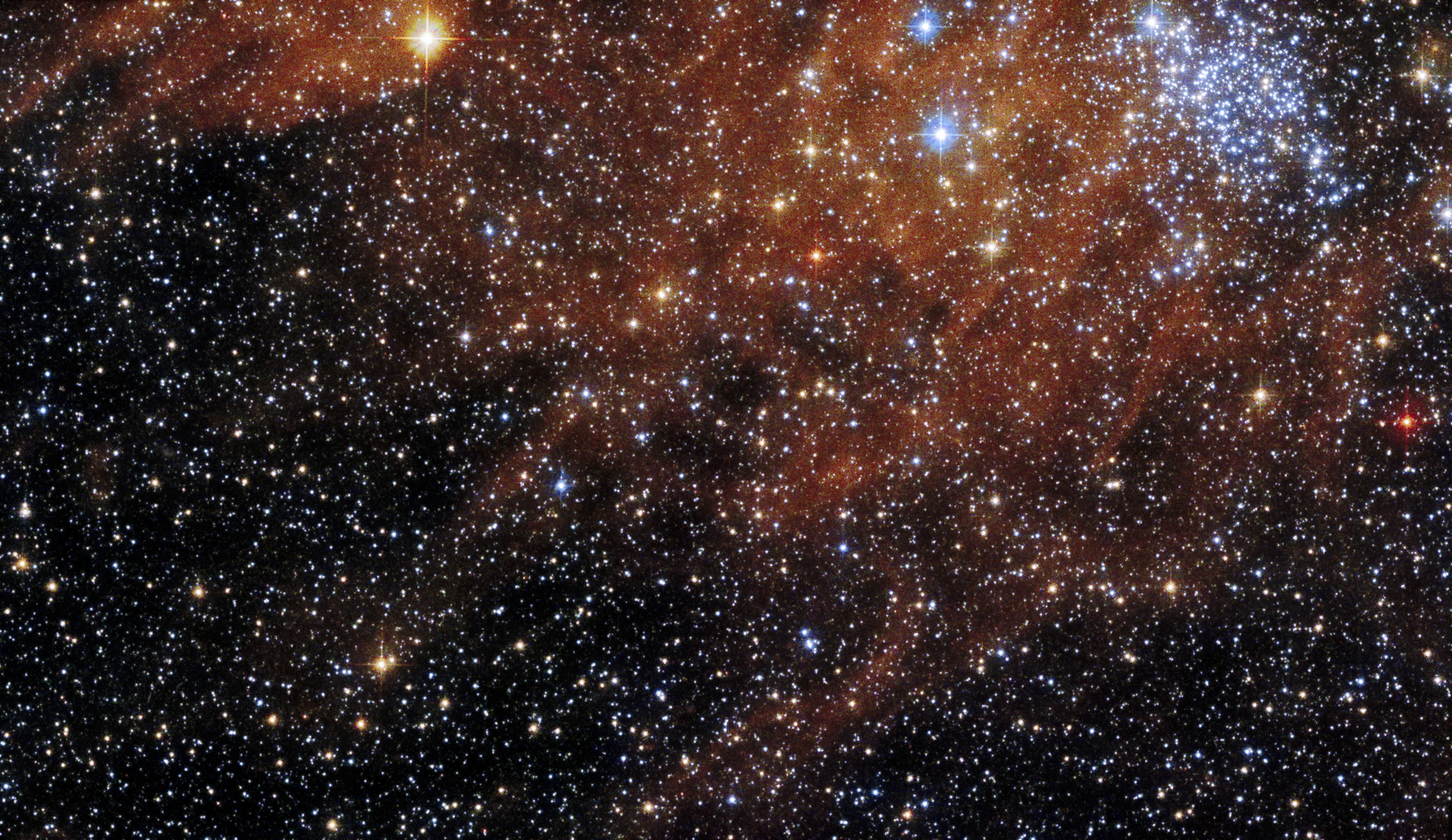Hubble Space Telescope peers into a glittering sea of extragalactic stars (photo)
Behold a fountain of star formation in the Large Magellanic Cloud, a dwarf satellite galaxy of the Milky Way.

Behold a fountain of star formation in the galaxy next door.
The Hubble Space Telescope is a critical tool for astronomers wishing to explore the nature of stars. One popular hotbed for study is the Large Magellanic Cloud (LMC), which is visible to observers in the Southern Hemisphere. The LMC looks like a strange smudge to the naked eye, but it's actually a satellite galaxy of our own Milky Way. The LMC is close enough to us that Hubble can make out individual stars within it, but the chasm between both galaxies presents some challenges, too.
A new Hubble image highlights a region in LMC rich in stars. The top right of the image is a glittering sea of stars from KMHK 1231, an open cluster where stars are loosely bound to one another by gravity. The crimson color represents a dust and gas nebula that could give rise to new stars someday.
Related: The best Hubble Space Telescope photos of all time
"[Open clusters] tend to form from the same cloud of gas and dust, so their stars share characteristics like age and chemical composition, providing excellent laboratories for studying how stars form and evolve," according to a NASA image description published on Dec. 6, 2022.
But there's a challenge: The amount of light that these stars release isn't immediately apparent. To learn their true nature, astronomers are looking at how the intergalactic space between Earth and the LMC soaks up the intense light of these stars.
"Hubble observed this particular cluster as part of a program to examine how ultraviolet light is absorbed by the material that exists in space between Earth and the Large Magellanic Cloud. This information helps astronomers discover how much light objects in the satellite galaxy to the Milky Way truly emanate, critical to determining the characteristics of these objects," Hubble officials wrote.
Get the Space.com Newsletter
Breaking space news, the latest updates on rocket launches, skywatching events and more!
Their efforts could yield new information about star formation, because open clusters provide "excellent laboratories for studying how stars form and evolve," according to NASA.
And as Hubble collects science, it also captures beautiful images that all of us can enjoy.
Follow Doris Elin Urrutia on Twitter @salazar_elin. Follow us on Twitter @Spacedotcom and on Facebook.
Join our Space Forums to keep talking space on the latest missions, night sky and more! And if you have a news tip, correction or comment, let us know at: community@space.com.

Doris is a science journalist and Space.com contributor. She received a B.A. in Sociology and Communications at Fordham University in New York City. Her first work was published in collaboration with London Mining Network, where her love of science writing was born. Her passion for astronomy started as a kid when she helped her sister build a model solar system in the Bronx. She got her first shot at astronomy writing as a Space.com editorial intern and continues to write about all things cosmic for the website. Doris has also written about microscopic plant life for Scientific American’s website and about whale calls for their print magazine. She has also written about ancient humans for Inverse, with stories ranging from how to recreate Pompeii’s cuisine to how to map the Polynesian expansion through genomics. She currently shares her home with two rabbits. Follow her on twitter at @salazar_elin.









